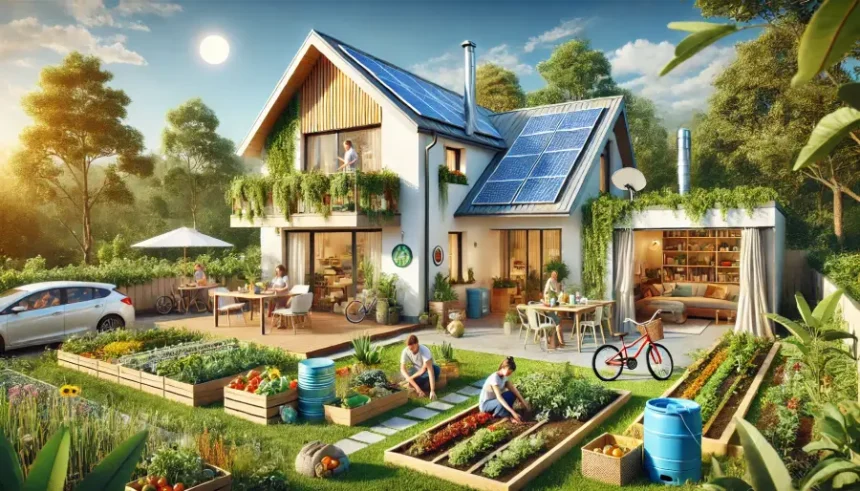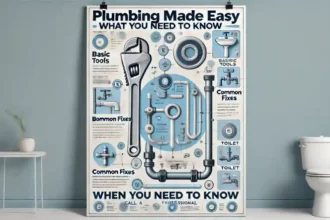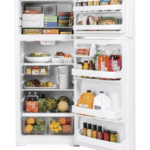Sustainable living means making choices that protect the environment by using fewer resources, reducing waste, and adopting eco-friendly habits. It’s about living in harmony with nature while ensuring future generations have access to the resources we enjoy today. This approach not only helps combat climate change but also promotes healthier and more mindful lifestyles.
Our homes are where sustainable living starts. By using energy-efficient appliances, reducing plastic waste, and conserving water, we can significantly lower our carbon footprint. Simple changes, like recycling or choosing sustainable materials, can save money and create a healthier, greener space for you and your family.
What You’ll Learn Here
This guide will show you:
- What sustainable living means and why it matters.
- Easy ways to make your home eco-friendly.
- Examples of sustainable practices you can start today.
Whether you’re just starting or already living sustainably, this guide will help you take the next steps toward a greener, healthier lifestyle. Let’s explore how to create a home that’s kind to the planet and works for you!
What is Sustainable Living?
Sustainable living is about making choices that are kind to the environment. It means using fewer resources, creating less waste, and protecting nature for future generations. The main idea is to live in a way that doesn’t harm the planet while still meeting your needs.
Your ecological footprint measures how much of the earth’s resources you use every day. Activities like driving, using energy, and throwing away waste all add to this footprint. Sustainable living focuses on reducing it by:
- Saving energy with efficient appliances and renewable sources like solar power.
- Cutting waste by recycling, composting, and choosing reusable items.
- Supporting eco-friendly products and brands.
Sustainable living is crucial for fighting climate change and saving resources like water, forests, and energy. With more people on the planet, we’re using resources faster than they can be replaced. By living sustainably, you help reduce pollution, protect wildlife, and ensure future generations have what they need.
Living sustainably isn’t just good for the planet—it also saves money, improves health, and creates a more balanced, mindful lifestyle. Small changes can make a big difference!
Why is Sustainable Living Important?
- Helping the Environment: Sustainable living is essential for protecting our planet. It helps save resources like water, energy, and forests. By reducing waste, using renewable energy, and recycling, we can cut down on pollution and lower greenhouse gas emissions. These actions slow climate change and protect wildlife, ensuring a healthier planet for future generations.
- Supporting Communities and Saving Money: Sustainable living also has social and economic benefits. Buying local products supports nearby farmers and businesses, reducing the need for long-distance transportation. This helps local economies grow while cutting down on carbon emissions. Energy-efficient appliances and renewable energy, like solar panels, can save you money on electricity and utility bills over time.
- Improving Your Health and Well-Being: Living sustainably is great for your personal health. Eco-friendly homes have cleaner air and fewer harmful chemicals. Eating organic or homegrown food can improve your diet and overall well-being. Sustainable living also brings a sense of purpose and satisfaction, knowing your choices are helping the planet. It’s a lifestyle that promotes balance, mindfulness, and happiness.
By choosing sustainable practices, you can protect the environment, support local economies, save money, and improve your quality of life. Every small change makes a big difference!
Ways to Live a Sustainable Life
Simple Daily Habits
Start with small, easy changes in your daily routine to live more sustainably:
- Save Energy: Turn off lights, unplug devices, and switch to energy-efficient LED bulbs.
- Reduce Waste: Recycle paper, plastic, and glass, and start composting food scraps to minimize what goes to landfills.
- Avoid Single-Use Plastics: Use reusable bags, bottles, and containers instead of disposable ones.
These habits not only help the planet but also save money and make your life more eco-friendly.
Sustainable Choices at Home
Your home is a great place to practice sustainability:
- Energy Efficiency: Upgrade to energy-efficient appliances and consider using renewable energy, like solar panels.
- Eco-Friendly Materials: Use sustainable building materials such as bamboo, reclaimed wood, or recycled products for renovations.
- Save Water: Install water-saving faucets, fix leaks, and collect rainwater for gardening.
Making these changes can reduce your carbon footprint and create a healthier home environment.
Green Transportation Options
Transportation is a major source of pollution, but you can make eco-friendly choices:
- Use public transport, carpool, bike, or walk whenever possible.
- Switch to electric or hybrid vehicles to cut fuel consumption and reduce emissions.
These options not only help the planet but also reduce your travel costs.
Sustainable Food Choices
Your diet plays a big role in sustainable living:
- Eat Local and Organic: Choose locally grown and organic food to support farmers and reduce transportation emissions.
- Try Plant-Based Meals: Eating more fruits, vegetables, and grains reduces your carbon footprint.
- Grow Your Own Food: Start a garden to enjoy fresh, homegrown produce.
Small shifts in your diet can have a big impact on the environment.
By making these changes, you can live a more sustainable life, reduce your impact on the planet, and improve your health and well-being. Every little step helps!
Examples and Techniques for Sustainable Living
Simple Examples of Sustainable Living
Sustainable living starts with small, everyday actions:
- Reusable Items: Use reusable bags, water bottles, and containers to reduce plastic waste.
- Solar Panels: Install solar panels to save energy and lower electricity bills.
- Rainwater Harvesting: Collect rainwater to water your plants or clean outdoor areas, helping conserve water.
These personal steps make it easy to reduce your carbon footprint and protect the planet.
Community Sustainability in Action
Communities are leading the way in sustainable living with innovative ideas:
- Eco-Villages: Neighborhoods built with renewable energy, shared resources, and sustainable designs.
- Urban Farming: Transform unused city spaces into gardens to grow fresh food locally and cut transportation costs.
- Shared Composting: Community compost projects turn food waste into valuable soil for gardening.
Working together creates bigger changes and benefits everyone.
Global Movements Inspiring Change
Global movements encourage people to adopt sustainable lifestyles:
- Zero-Waste Living: Reduce trash by reusing, recycling, and composting as much as possible.
- Minimalism: Buy less and focus on what you truly need, reducing waste and overconsumption.
- Fair Trade Products: Support ethical and eco-friendly brands that pay fair wages and use sustainable practices.
These global ideas are reshaping how we live and care for the planet.
Techniques for Sustainable Living
Use these practical techniques to live more sustainably:
- Renewable Energy: Switch to solar panels, wind power, or geothermal energy to reduce reliance on fossil fuels.
- Passive Home Design: Use natural light, proper insulation, and ventilation to lower energy use in your home.
- DIY Projects: Make compost bins, upcycle old furniture, or create rainwater collection systems.
- Eco-Friendly Products: Choose sustainable materials like bamboo, recycled fabrics, and biodegradable items.
These techniques are simple to adopt and can save money while helping the environment.
By combining personal actions, community efforts, and innovative techniques, you can live a sustainable lifestyle that benefits the planet and improves your life. Small changes lead to big impacts—start today!
Benefits of Sustainable Living
Sustainable living offers many advantages for individuals, communities, and the environment. Here’s how adopting eco-friendly practices can make a positive impact, supported by key statistics:
1. Save Money in the Long Run
One of the most noticeable benefits of sustainable living is saving money. Switching to energy-efficient appliances can reduce energy bills by up to 25%, according to the U.S. Department of Energy. Solar panels are another cost-saving option, with an average household saving approximately $1,500 annually on electricity bills. Reducing waste and using reusable items can also cut costs on single-use products, which account for 50% of plastic waste globally.
2. Protect the Environment
Living sustainably reduces pollution and conserves natural resources. Recycling just one ton of paper saves 17 trees, 7,000 gallons of water, and reduces greenhouse gas emissions equivalent to removing one car from the road for six months. Additionally, renewable energy sources like solar and wind power contribute to reducing global carbon dioxide emissions, which totaled 36.8 billion metric tons in 2022.
3. Improve Health and Well-Being
Sustainable practices improve health by creating cleaner environments. Studies show that homes with eco-friendly materials and proper ventilation can improve indoor air quality, reducing respiratory illnesses by up to 20%. Eating organic or locally grown food lowers exposure to harmful chemicals, with a 43% reduction in pesticide residue exposure for individuals who choose organic diets. Spending time in green spaces, linked to sustainable living, is proven to reduce stress and improve mental health.
4. Enhance Quality of Life
A sustainable lifestyle often leads to a simpler, more fulfilling life. Minimalist living, a key aspect of sustainability, is associated with a decline in stress and clutter for 82% of people who adopt the practice. Joining sustainable communities can also strengthen social ties and create a sense of belonging, which studies show is linked to higher happiness levels.
5. Support Local Economies
Buying from local farmers and businesses reduces the need for transportation and supports the community. Local markets generate up to $9 billion annually in revenue in the U.S. alone. Supporting eco-friendly industries like renewable energy also creates jobs—according to the International Renewable Energy Agency (IRENA), the renewable energy sector employed 12.7 million people worldwide in 2022.
6. Combat Climate Change
Sustainable living directly addresses climate change. Switching to electric vehicles reduces emissions by 50% compared to gas-powered cars. Using renewable energy sources like wind and solar could cut global energy-related CO₂ emissions by 70% by 2050, according to the International Energy Agency (IEA). Sustainable transportation options, such as biking or public transit, also significantly lower air pollution, which contributes to an estimated 4.2 million premature deaths annually.
7. Build a Brighter Future
Living sustainably ensures a better future for the next generation. The United Nations estimates that sustainable practices could prevent up to 12 million tons of plastic waste from entering the ocean each year. Teaching and sharing these habits can inspire others, creating a ripple effect that helps tackle global challenges like resource depletion and climate change.
Challenges of Sustainable Living
Sustainable living is rewarding, but it comes with challenges that can make it harder to adopt. Knowing these obstacles can help you find ways to overcome them.
- Cost: Eco-friendly products like solar panels or energy-efficient appliances often require a high upfront cost. However, these investments usually save money over time by reducing energy bills and waste.
- Difficulty: Changing long-standing habits can be tough. Adjusting to practices like composting, reducing energy use, or cutting out single-use plastics takes time and effort. Starting with small, manageable changes can make the process easier.
- Accessibility: Not everyone has access to sustainable products and services. In some areas, finding organic food, renewable energy options, or eco-friendly materials can be difficult, especially in rural or underserved regions.
- Misconceptions: Understanding what is truly sustainable can be confusing. Greenwashing, where companies falsely advertise products as eco-friendly, makes it hard to make informed choices. Learning and researching before making purchases can help.
Inspiration for Sustainable Living
Finding inspiration can motivate you to make positive changes and embrace sustainable living.
Inspirational Quotes
- “The Earth is what we all have in common.” – Wendell Berry
- “Small acts, when multiplied by millions, can transform the world.” – Howard Zinn
- “Sustainability is not just about doing less harm; it’s about doing more good.” – Unknown
Books and Resources
Reading about sustainable living can provide new ideas and motivation:
- “The Zero-Waste Home” by Bea Johnson: Practical tips for living with less waste.
- “No Impact Man” by Colin Beavan: A story about reducing environmental impact in daily life.
- “Braiding Sweetgrass” by Robin Wall Kimmerer: A blend of science and Indigenous wisdom about living in harmony with nature.
Sustainable Products
Using the right products can make sustainable living easier:
- Reusable water bottles, food containers, and shopping bags.
- Solar-powered gadgets and energy-efficient light bulbs.
- Compost bins, bamboo utensils, and biodegradable cleaning supplies.
These tools simplify eco-friendly living and help reduce your environmental impact.
Conclusion
Sustainable living is about protecting the planet, improving your well-being, and creating a better future. By reducing waste, conserving resources, and making mindful choices, you can make a positive impact on the environment and your life.
You don’t need to make big changes all at once. Start small—choose reusable products, save energy, or eat more locally grown food. Each step you take contributes to a healthier planet.
Imagine a world where clean air, thriving ecosystems, and sustainable practices are the norm. Together, we can make this vision a reality. Your actions matter, no matter how small. Start your sustainable journey today and inspire others to join the movement for a greener, brighter future.












